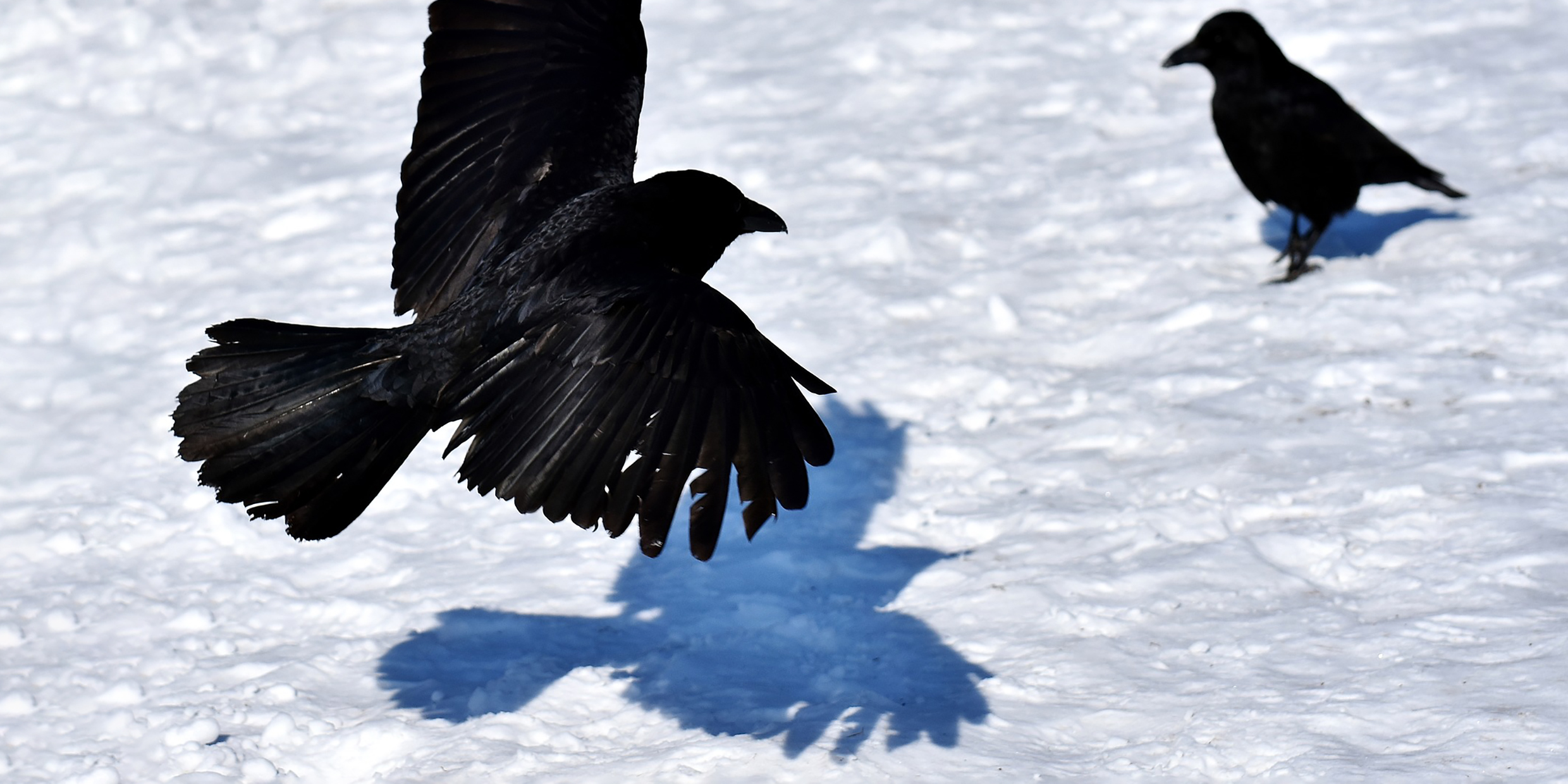Originally published 19 February 1995
A crow in a snowy dawn.
It hopped into the air, imprinting the snow with its black-fingered wings. Pushed, pushed, pushed, heavily upwards, searching for updrafts, gaining altitude in the glassy light. A graceful slide, tilting, balancing like a highwire artist. Then, with a few awkward flaps, it came to rest in the top boughs of a pine.
Suddenly it occurred to me, something that had not passed my mind before: My perceptions of the crow had been educated 40 years ago in a college course called Calculus 101.
The poet Wallace Stevens titled a poem Thirteen Ways of Looking at a Blackbird. I had just become conscious of way No. 14.
A crow — and calculus?
Let me start at the beginning.
Somewhere about the second or third week of every university calculus course, the student is introduced to the concept of a limit. In my textbook, the definition was as follows. I quote it in full, perversely, knowing that I risk losing my readers.
DEFINITION: Let f(x,Δx) be defined for some fixed value of x and for all values of Δx (different from zero) in some interval -h<Δx<+h, that is, for -h<Δx<0 and for 0<Δx<+h. Let there be a number L(x) (which may depend upon x), such that to any positive number ε, there corresponds a positive number δ, 0<δ<h, having the property that f(x,Δx) differs from L(x) by less than ε when |Δx| is different from zero and is less than δ. That is, if 0<|Δx|<δ, then |f(x,Δx) — L(x)|<ε.
This passage was the most incomprehensible thing I had read in my life. It was appended to the statement “These preliminary remarks should now enable us to understand…”
Of course, I did not understand.
I doubt if any first-year calculus student reaches this point in the course with understanding.
Still, I was smart enough to know that if I sidestepped this initial hurdle I would never grasp what followed. So I beat my head against it for a week until the light bulb finally went on. I figured out the definition of a limit.
The rest, as they say, was a piece of cake. The study of calculus became pure bliss. No kidding. Maybe I was weird or something, but I remember calculus as being the neatest thing I encountered in college.
But it was a cold neatness, abstract, apparently useless. Oh yeah, I took my degree in physics, and physicists use calculus to express the laws of nature. But it was a funny sort of nature we studied in physics — without crows, or snow, or the marks of wings in snow. I was looking for something warmer, more concrete, more immediate. As the years passed I drifted from physics into writing.
And forgot about calculus.
But something ineradicable had been planted in my mind. Something about flow. About transformation. About continuous change.
Something about birds sculling snowy air.
Calculus was invented in the 17th century by Isaac Newton and Gottfried Leibnitz specifically as a language to describe flow and change. What today we call a differential in calculus, Newton called the “moment of a fluent” and 18th century mathematicians called a “fluxion.” Fluent, flux, flow; it’s all the same.
It’s there, invisible, in the way the crow makes its way on air from snow to bough.
The poet Marianne Moore wrote: “The power of the visible is the invisible.” Calculus is about invisibles — the infinite and the infinitesimal. That’s what the cryptic definition of a limit is all about. A way to talk meaningfully about unseeables.
Consider the thing we call a derivative in calculus: It is the limit of a ratio of two numbers that separately vanish into nothingness, leaving behind something spooky but palpably real — the derivative — like the grin of the Cheshire cat. Calculus is the study of grins. The cat itself, the haughty, furry, ball of purr, is a subject for naturalists and poets.
At some point in my life, I abandoned calculus for the language of naturalists and poets because I couldn’t make the connection between the grin and the cat. Like Marianne Moore, I knew that the power of the visible is invisible, but I was tired of mathematical abstractions.
Which brings me back to the crow.
Way No. 14: A flux of feathers, a flow of air.
As I watched that heap of shine and feathers hop, flap and sail itself up into the pine, I realized that the crow was a beautiful physical embodiment of those abstract differential equations I studied long ago. Calculus was invented as a language for describing continuous change in nature.
Watching the crow I was an eavesdropper, listening in on nature’s conversation with herself.



